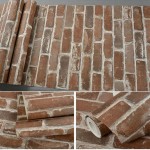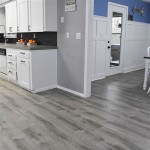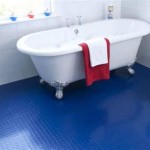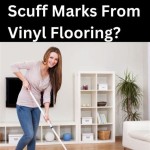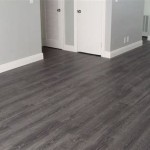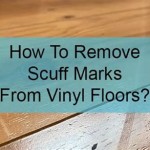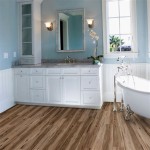Engineered Vinyl Flooring Reviews: A Comprehensive Guide
Engineered vinyl flooring (EVF) has rapidly gained popularity as a versatile and cost-effective flooring solution for residential and commercial spaces. It offers a compelling blend of aesthetic appeal, durability, and ease of installation, making it a desirable alternative to traditional materials like hardwood, tile, and laminate. This article provides a comprehensive overview of engineered vinyl flooring, delving into its construction, types, advantages, disadvantages, and crucial factors to consider when evaluating different products and brands. By examining these aspects, prospective buyers can make informed decisions and select the EVF solution that best aligns with their specific needs and preferences.
Engineered vinyl flooring differs from traditional sheet vinyl. It is constructed in multiple layers, each contributing to the overall performance and stability of the floor. These layers typically include a wear layer, a print layer, a core layer, and often an underlayment. The wear layer, usually made of a clear PVC film, is the topmost protective surface that shields the floor from scratches, stains, and everyday wear and tear. Its thickness is a critical factor in determining the floor's durability and longevity. The print layer, situated beneath the wear layer, features a high-resolution image that replicates the look of natural materials such as wood, stone, or tile. Advanced printing technologies allow for realistic textures and intricate patterns, enhancing the aesthetic appeal of EVF. The core layer provides structural stability and resistance to moisture. Different types of core materials are used, including WPC (wood-plastic composite), SPC (stone-plastic composite), and solid vinyl. Each core type offers varying levels of water resistance, rigidity, and comfort underfoot. Finally, an attached underlayment can add cushioning, sound insulation, and improve overall comfort.
Understanding the Key Types of Engineered Vinyl Flooring
Engineered vinyl flooring encompasses several distinct types, each characterized by its core material and construction. Understanding these distinctions is vital for choosing the appropriate product for a specific environment and application.
Luxury Vinyl Plank (LVP): LVP is designed to mimic the appearance of hardwood planks. It is typically available in long, narrow planks with realistic wood grain patterns and textures. LVP often features a thicker wear layer compared to other EVF types, making it suitable for high-traffic areas. Its enhanced durability and realistic aesthetics contribute to its popularity in residential settings, particularly kitchens, living rooms, and bedrooms.
Luxury Vinyl Tile (LVT): LVT replicates the look of ceramic, porcelain, or stone tiles. It comes in square or rectangular shapes, often with grout lines embossed into the surface to enhance the authentic tile appearance. LVT is a popular choice for bathrooms, kitchens, and entryways due to its water resistance and ease of maintenance. It also offers a warmer, more comfortable feel underfoot compared to traditional tile.
Wood-Plastic Composite (WPC) Core: WPC flooring features a core made from a blend of wood flour and plastic. This composition provides a degree of water resistance, making it suitable for areas with moderate moisture exposure. WPC cores tend to be softer and more comfortable underfoot compared to SPC cores.
Stone-Plastic Composite (SPC) Core: SPC flooring has a core made from a combination of limestone and plastic. This core provides exceptional rigidity and dimensional stability, making it highly resistant to dents, scratches, and temperature fluctuations. SPC is considered waterproof and performs well in high-moisture environments such as bathrooms, basements, and laundry rooms. Its durability makes it a popular choice for commercial applications as well.
Solid Vinyl Flooring: Solid vinyl is typically thinner and more flexible than WPC or SPC flooring. It's often used in sheet form, but also available in tiles or planks. It is highly water-resistant, easy to clean, and can be a budget-friendly option.
Evaluating the Advantages and Disadvantages of Engineered Vinyl Flooring
Engineered vinyl flooring offers a compelling array of benefits, but also presents certain limitations that prospective buyers should carefully consider. A balanced assessment of these advantages and disadvantages is crucial for making an informed decision.
Advantages:
Water Resistance: Many types of EVF, especially those with SPC cores, are highly water-resistant or even waterproof. This makes them suitable for moisture-prone areas like bathrooms, kitchens, and basements, where traditional hardwood or laminate flooring may be susceptible to damage.
Durability: EVF is generally durable and resistant to scratches, dents, and stains. The thickness of the wear layer is a key indicator of its resistance to wear and tear. Higher wear layer thicknesses are recommended for high-traffic areas or homes with pets and children.
Ease of Installation: Many EVF products feature click-lock installation systems, allowing for relatively easy DIY installation. This can save on professional installation costs. However, proper subfloor preparation is essential for a successful installation.
Aesthetic Versatility: EVF is available in a wide range of styles, colors, and patterns, mimicking the look of natural materials like wood, stone, and tile. This versatility allows homeowners to achieve the desired aesthetic without the high cost and maintenance requirements of natural materials.
Comfort Underfoot: EVF tends to be softer and warmer underfoot compared to hard surfaces like tile or stone. The presence of an attached underlayment can further enhance comfort and provide sound insulation.
Cost-Effectiveness: EVF is generally more affordable than hardwood, tile, or stone flooring. This makes it a budget-friendly option for homeowners who want to achieve a high-end look without breaking the bank.
Disadvantages:
Environmental Concerns: Some EVF products contain PVC (polyvinyl chloride), a plastic material that can release harmful chemicals during manufacturing or disposal. Choosing low-VOC (volatile organic compound) products and considering the environmental impact of the manufacturing process are important considerations.
Repair Challenges: While EVF is durable, damage can occur. Replacing individual planks or tiles can be challenging, particularly with click-lock systems if the original batch is no longer available. Depending on the extent of the damage, full replacement may be necessary.
Subfloor Sensitivity: Like many flooring types, EVF requires a smooth, level, and stable subfloor for optimal performance. Imperfections in the subfloor can telegraph through the EVF, resulting in unevenness or damage over time. Proper subfloor preparation is crucial for preventing these issues.
Resale Value: While EVF is aesthetically pleasing and durable, it may not add as much resale value to a home as natural materials like hardwood. However, its affordability and ease of maintenance can still appeal to potential buyers.
Potential for Fading: Prolonged exposure to direct sunlight can cause some EVF products to fade over time. Using window treatments to minimize direct sunlight exposure can help mitigate this issue.
Key Factors to Consider When Choosing Engineered Vinyl Flooring
Selecting the appropriate engineered vinyl flooring requires careful consideration of various factors, including the intended use of the space, the level of foot traffic, moisture exposure, aesthetic preferences, and budget constraints. By addressing these factors, buyers can narrow down their options and choose the product that best meets their specific needs.
Wear Layer Thickness: The thickness of the wear layer is a critical indicator of the floor's durability and resistance to scratches, stains, and wear and tear. In residential settings, a wear layer thickness of 12 mil or greater is generally recommended for high-traffic areas or homes with pets and children. For commercial applications, a wear layer thickness of 20 mil or greater is often necessary.
Core Material: The type of core material (WPC, SPC, or solid vinyl) influences the floor's water resistance, rigidity, and comfort underfoot. SPC cores provide exceptional rigidity and waterproof performance, while WPC cores offer a softer, more comfortable feel. Solid vinyl options are generally more flexible. Consider the specific requirements of the space when choosing the core material.
Installation Method: EVF is available in various installation methods, including click-lock, glue-down, and loose-lay. Click-lock systems are generally easier to install for DIYers, while glue-down installations provide a more permanent and stable bond. Loose-lay options are easy to install and reposition, but may not be suitable for high-traffic areas.
Aesthetic Preferences: EVF offers a wide range of styles, colors, and patterns, mimicking the look of natural materials like wood, stone, and tile. Choose a style that complements the overall design aesthetic of the space and aligns with personal preferences.
Budget: EVF prices vary depending on the type of product, wear layer thickness, core material, and brand. Establish a budget and compare prices from different retailers to find the best value. Factor in installation costs if professional installation is required.
Warranty: Reputable EVF manufacturers typically offer warranties that cover defects in materials and workmanship. Review the warranty terms and conditions carefully before making a purchase. Warranties may vary in duration and coverage depending on the product and brand.
Subfloor Preparation: Proper subfloor preparation is essential for a successful EVF installation. Ensure that the subfloor is smooth, level, clean, and dry before installing the flooring. Uneven or damaged subfloors can lead to problems with the EVF over time.
VOC Emissions: Choose EVF products that are certified low-VOC (volatile organic compound) to minimize indoor air pollution. Look for certifications such as FloorScore or Greenguard. These certifications indicate that the product has been tested and meets stringent emission standards.
Maintenance Requirements: EVF is generally easy to maintain, but regular cleaning is necessary to keep it looking its best. Sweep or vacuum regularly to remove dirt and debris. Use a damp mop with a mild detergent to clean the floor as needed. Avoid using abrasive cleaners or harsh chemicals, as these can damage the wear layer.

Luxury Vinyl Plank Flooring Review Home Cute Little

My Luxury Vinyl Plank Flooring Review Pros And Cons Average But Inspired

Vinyl Plank Flooring Review 2 Years Later Love Renovations

My Vinyl Plank Floor Review Two Years Later Cutesy Crafts

Luxury Vinyl Plank Flooring Review The Turquoise Home

My Vinyl Plank Floor Review Two Years Later Cutesy Crafts

Luxury Vinyl Plank Flooring Review The Turquoise Home

Unbiased Luxury Vinyl Plank Flooring Review Cutesy Crafts

Provea Vinyl Plank Flooring Review Sprucing Up Mamahood

Reviews For Home Decorators Collection Palenque Park 12 Mil X 7 In W 48 L Waterproof Lock Luxury Vinyl Plank Flooring 23 8 Sq Ft Case Pg 1 The Depot
Related Posts

